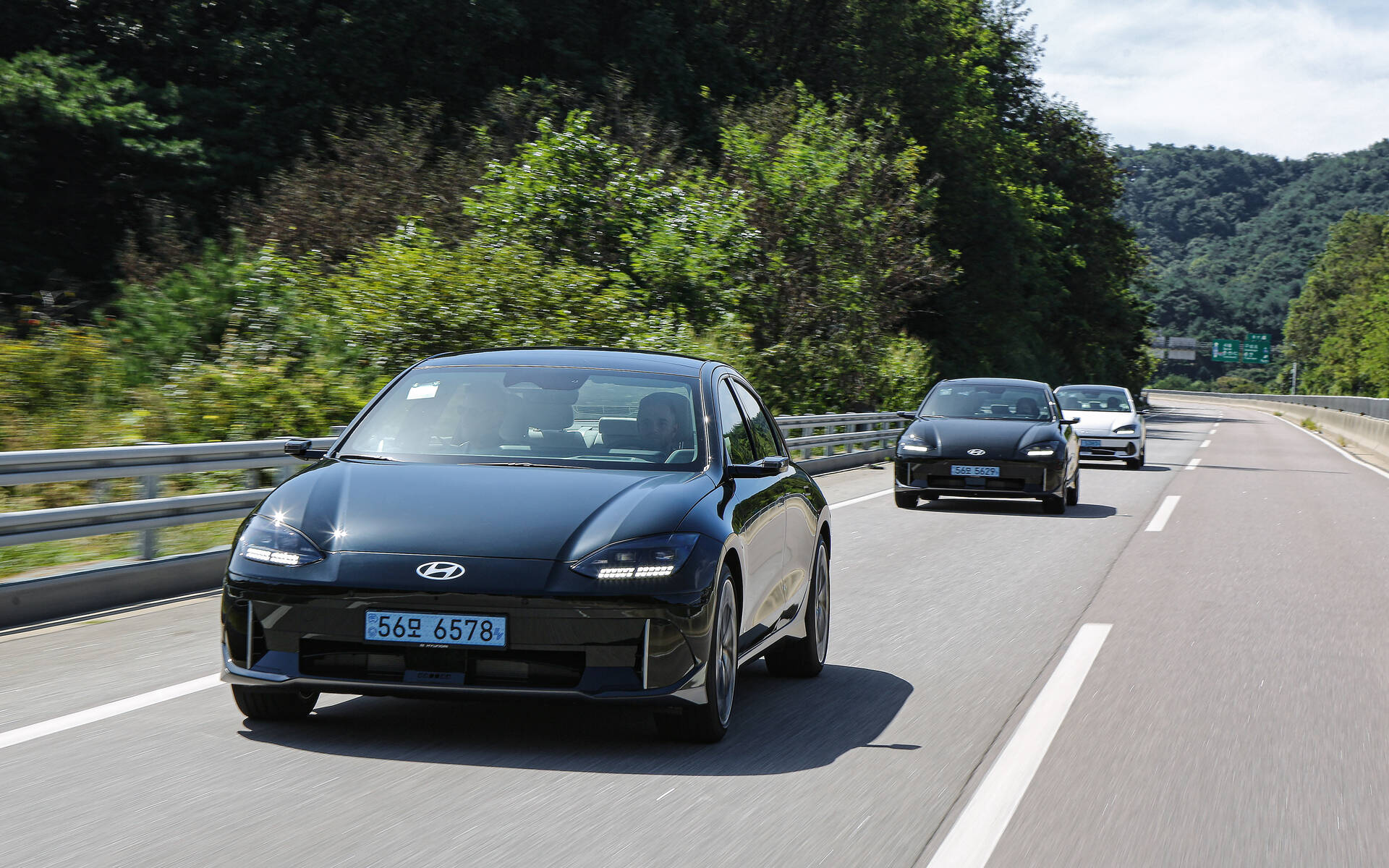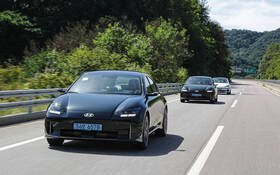2023 Hyundai IONIQ 6: A Tough Matchup for the Tesla Model 3

| Strong points |
|
|---|---|
| Weak points |
|
The Tesla Model 3 is the undisputed king of electric car sales while the Polestar 2 plays second fiddle. Now, here comes the all-new Hyundai IONIQ 6, a potentially game-breaking sedan from South Korea that shares its E-GMP architecture and 800V charging system with the IONIQ 5 (not to mention the Kia EV6 and Genesis GV60).
Hyundai received more than 37,000 pre-orders in its domestic market on the very first day the IONIQ 6 launched. Sadly, it will be impossible for the automaker to keep up as production will initially be limited to 3,000 units a month.
- Also: 2022 Hyundai Ioniq 5 Ultimate : Futuristically Ambitious
- Also: Slick Hyundai IONIQ 6 to Have Way More Range Than IONIQ 5
Electric Streamliner
As one of the leaders in the EV segment, Hyundai impresses with attractive and efficient offerings. Unlike the very angular, crossover-style IONIQ 5, the new IONIQ 6 is designed as an electric and modern interpretation of the 1930s streamliners, with smooth lines and world-class aerodynamic performance. Its 0.21 drag coefficient is nearly on par with the Mercedes-Benz EQS and Tesla Model S (0.20). Even the Hyundai logo on the sloping front end is flush with the body to create the least wind resistance possible.

Further aiding the IONIQ 6’s enviable aerodynamic aptitude are active air flaps at the front (which open only when the battery needs to be cooled), wheel gap reducers and a fully covered undercarriage. In the rear, an elliptical wing-inspired spoiler with winglet and slight boat-tail structure highlight the design.
Optional slim digital side mirrors use cameras to display an image on a pair of small monitors—one at each end of the dashboard. As you can imagine, this feature will not make it to North America due to our safety standards, so look for conventional mirrors instead.

Similar to the Hyundai Prophecy concept that foreshadowed the IONIQ 6, so-called “Parametric Pixels” define the car’s lightning signature. There are over 700 of them, mostly in the headlights and taillights. Meanwhile, the standard 18-inch wheels can be replaced by 20-inch units.
As Much Range as a Model 3?
The Hyundai IONIQ 6 offers a choice of two batteries with a capacity of 53 kWh and 77.4 kWh. The former can only be paired with the single-motor RWD configuration, while the latter is available with either one or two motors.

The automaker claims a maximum range of 614 km with the 77.4kWh battery and single-motor setup. That’s based on the very optimistic WLTP standard, though. A more realistic figure would be around 500 km.
Our first test drive of the IONIQ 6 involved the larger pack, dual motors and optional 20-inch wheels on Pirelli P Zero tires. The battery was charged to 97 percent and promised a range of 455 km before we hit the road.
Some other specs you should know about: combined output was rated at 320 horsepower along with 446 pound-feet of torque. Given the car’s weight of 2,100 kg, 0-100 km/h sprints can be achieved in 5.1 seconds.

The IONIQ 6 proves comfortable and super-quiet. In fact, road noise is more noticeable than wind noise. Unfortunately, we didn’t really get the opportunity to test handling characteristics and seriously push the car because of all the speed cameras and speed reducers we encountered along the way.
For sure, the IONIQ 6 is extremely efficient with an energy consumption of approximately 17 kWh/100 km in this particular configuration. With the 800V charging system, the battery can be replenished from 10-80 percent in just 18 minutes when plugged into a 350kW DC fast charger (still a pretty rare sight in Canada). Using a level-2 AC charger providing 11 kW of power, a full charge requires eight hours.
Spacious Interior
The Hyundai IONIQ 6 stands 4.85 metres long including a wheelbase of 2.95 metres. Rear-seat legroom is particularly generous as a result—I personally felt quite at ease sitting in the back with the driver’s seat positioned for my 5’10” frame. On the other hand, headroom is tight due to the swooping roofline.

The infotainment system is obviously very similar to that of the IONIQ 5, meaning sharp-looking and easy to use. Curiously, Apple CarPlay and Android Auto integration still requires you to plug in your phone with a USB cable. And yet there’s a wireless charging pad on the console. Go figure.
With production for North America scheduled to start in January of 2023, we should see the first units on the road sometime next spring or early summer. At least that’s what a Hyundai rep for the U.S. market told us.
Pricing will be announced closer to launch but shouldn’t be too far off the IONIQ 5. Look for the IONIQ 6 to qualify for federal and provincial EV rebates in Canada. Just how many units will be available remains to be seen.











